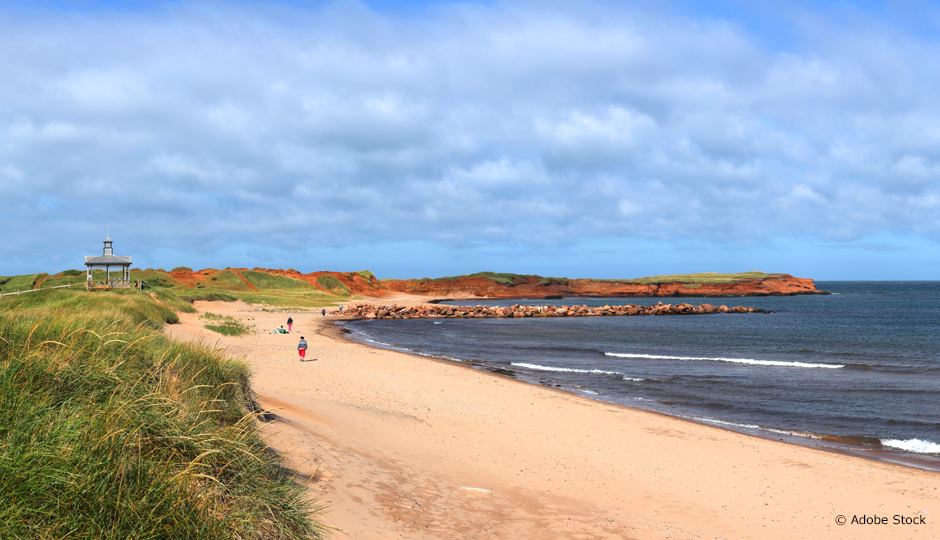Some beaches may contribute to ocean acidification and the emission of CO2 into the atmosphere. According to Gwénaëlle Chaillou, professor at UQAR and researcher at Institut des sciences de la mer de Rimouski, the impact could be significant enough to be considered in carbon cycle models.
The subterranean freshwater percolates through the sand and carries the carbon generated by the leaching of ancient soils to the sea.
Gwénaëlle Chaillou is one of the few researchers who study beaches as underground estuaries: areas where groundwater runs into an ocean’s salty waters. This is the case in Îles-de-la-Madeleine. Indeed, when she set her towel out on one of the islands’ sandy beaches, Professor Chaillou realized that it was dampened by freshwater from the ground—not salt water from the gulf. She then inferred that the beach could serve as a medium of exchange between the coastal and marine environments: the subterranean freshwater percolates through the sand and carries the carbon generated by the leaching of ancient soils to the sea.
To understand the extent of these exchanges of natural carbon, as well as of contaminants from sources such as agriculture, she worked with hydrogeologists and oceanographers to quantify the groundwater discharge. Using piezometers, the experts looked to hydrogeological techniques to measure groundwater levels under the sand. They also adapted marine geochemistry methods to assess isotopes, including radon, to calculate the freshwater volumes and quantity and origin of the carbon that end up in the sea.
Many North American seashores are part of underground freshwater networks, and more and more beaches around the world will link to groundwater systems as sea levels rise. Gwénaëlle Chaillou therefore hopes her findings will enhance carbon cycle models by accounting for the carbon carried by groundwater.




